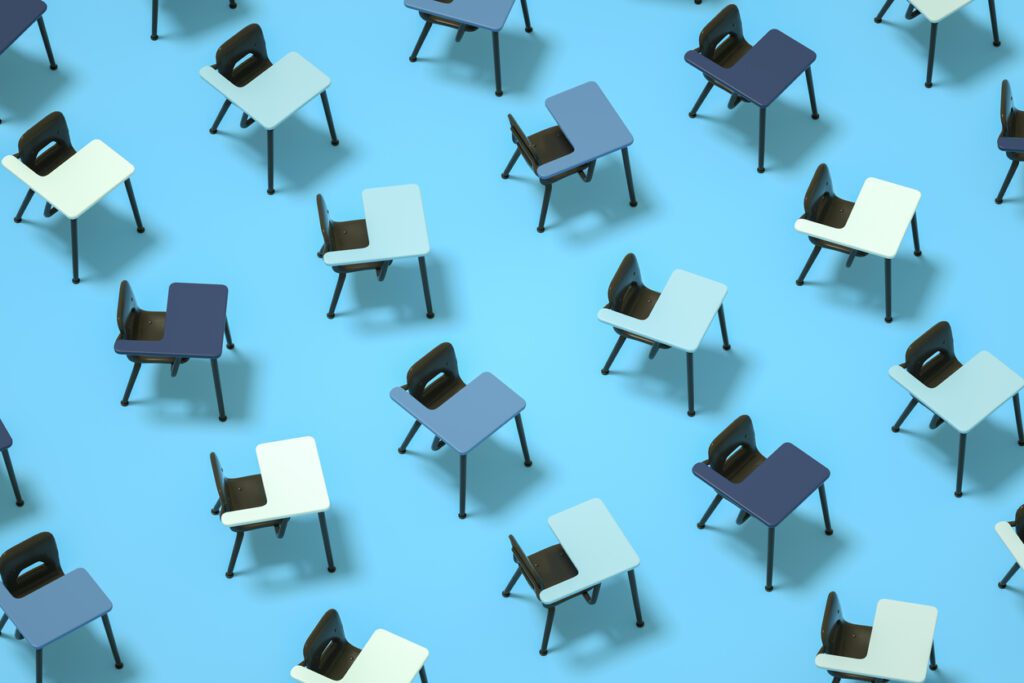Did you know that your classroom setup can influence students’ focus, behavior, and engagement? From the arrangement of desks to the lighting and decor, learning environments can either encourage or hurt student participation and learning.
Research done by the University of Salford shows that in thoughtfully designed classrooms, students showed an improvement in their learning (Science Daily).
Lighting and color
The lighting and color schemes of the room play a big role in creating an engaging environment. Natural light has been shown to enhance cognitive function and improve mood, which can directly impact students’ concentration and participation. In a study published in The Journal of Environmental Psychology, classrooms with ample natural light led to increased student performance on cognitive tasks.
Also, colors have an influence on our mood. An article from Redbooth shares the four colors that can help productivity.
- Red encourages physical response
- Yellow stimulates creativity and confidence
- Green brings calm feelings and helps to avoid feeling overwhelmed
- Blue encourages focus and communication
Art and decor
Another important aspect is the use of educational displays. Classrooms that incorporate student work and visually stimulating learning tools increase student investment in the lesson. Students in environments that showcase their own work tend to feel more proud, confident, empowered, and connected to their classroom (The Art of Education University).
*It is important to note that students who have sensory issues may find overly colorful and excessively decorated classrooms overly stimulating (Autism Speaks). Finding the right balance is important to keep students engaged and excited while making sure not to cause feelings of stress. To learn more about how to support students with Autism, check out Autism Speaks School Tool Kit.
Classroom Setup & Seating Arrangements
Lastly, the classroom setup has an impact on the teacher-student interactions. A layout that allows for easy movement and proximity between the teacher and students fosters a more inclusive environment where students feel comfortable asking questions and engaging in discussions. The National Library of Medicine states that when students were in a classroom with different furniture set up in various ways, they “spent significantly more time actively engaged with the lesson content” (NIH). Flexible seating options such as clusters of desks, circular seating, or standing desks allow for more natural interaction, collaboration, and a sense of community in the classroom.
If you are interested in feng shui, using energy to harmonize people with their surroundings, check out this YouTube video that dives deeper into that (YouTube).
Lastly, If you are looking to create fun and unique classroom environments, we encourage you to reach out to our friends at Inventionland Education. They also have a grant opportunity that can help lower costs for transforming educational spaces.
Although there are factors of your classrooms that are out of your hands, there are still some simple ideas that you can use to help create environments where your students can thrive!
